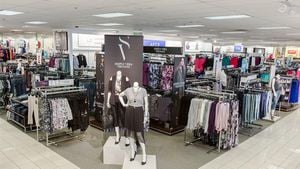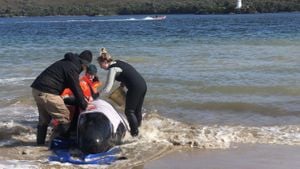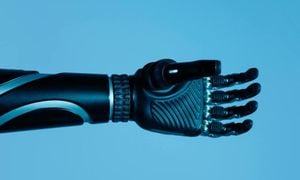Boeing’s troubled astronaut mission has finally come to an end, albeit with some unexpected twists. The company’s Starliner spacecraft returned to Earth early on September 7, 2024, after successfully completing its uncrewed mission, but it's leaving behind two seasoned astronauts still orbiting the planet. Veteran astronauts Butch Wilmore and Sunita ‘Suni’ Williams will remain aboard the International Space Station (ISS) until February 2025, when they are slated to return on a SpaceX Dragon capsule.
The Starliner, after facing numerous technical challenges throughout its mission, landed on autopilot at White Sands Missile Range, New Mexico, marking the conclusion of a flight marred by engine troubles. Initial fears about the capsule’s safety compelled NASA to select SpaceX for the astronauts’ return, leaving Wilmore and Williams stranded during what should have been a seamless mission. NASA ended up deeming it too risky for the astronauts to return aboard Starliner after encountering numerous thruster malfunctions and helium leaks early on.
Less than thirty minutes prior to the landing, the spacecraft undocked from the ISS after spending three months there, significantly longer than anticipated. Recordings from NASA’s missions captured the moment as the capsule exited the station and ventured back through Earth’s atmosphere, reminding mission control of the importance of safety first, even at the cost of extending the astronauts’ stay.
Upon reentry, Starliner faced some obstacles, including thruster issues, but it culminated successfully with what NASA deemed a “bull’s-eye landing.” Despite the tense moments, all systems performed nominally during descent, with ground control celebrating the safe touchdown.
Steve Stich, NASA's commercial crew program manager, emphasized the importance of prioritizing astronaut safety throughout the mission, saying, “I think we made the right decision not to have Butch and Suni on board. All of us feel happy about the successful landing. But then there's a piece of us, all of us, which we wish it would have been the way we had planned it.” This sentiment was echoed by top Boeing officials, who expressed their support for NASA’s decisions throughout the tumultuous mission.
Boeing’s Starliner mission had long been plagued with delays and complications, particularly since the beginning of its testing phases. After the retirement of NASA’s space shuttle fleet, the agency sought alternatives for transporting astronauts to the ISS which led to the partnerships with both Boeing and SpaceX under the Commercial Crew Program. Initially, industry experts had high expectations for Boeing due to its extensive background in aerospace; yet as SpaceX rapidly progressed, Boeing faced setbacks including repeated failures during its testing.
Now, following the return of Starliner, both Boeing and NASA are set to analyze the mission data to fast-track the development of the spacecraft and prepare for its next crewed flight. Ken Bowersox, NASA’s assistant administrator of the Space Operations Directorate, stated with pride, “I am extremely proud of the work our collective team put together during this entire flight test, and we are pleased to see Starliner’s safe return.”
One of the key challenges faced was the capsule’s propulsion system, which had shown signs of deteriorations such as overheating thrusters leading to failures during flight. Engineers will now have to dissect the mechanics involved and try to ascertain exactly what went wrong and how to prevent similar issues from arising again.
The astronaut duo aboard the ISS are no strangers to lengthy missions; both have spent considerable time beyond Earth. Wilmore and Williams, both retired Navy captains, understand the trials linked to spaceflight and are making the most of their extended stay by continuing their work on various science experiments and repairs on the space station.
The extended stay on the ISS is not without its complications, as it requires NASA to manage additional logistics including food, clothing, and other necessities for the astronauts. With their unexpected contributions to the ISS totaling several months, the presence of the additional crew necessitates optimized resource management.
Looking forward, NASA is committed to maintaining multiple avenues for transporting astronauts, thereby avoiding reliance on just one provider. The Commercial Crew Program had emphasized the need for redundancy, aiming to leverage both Boeing and SpaceX equally for future missions.
The Starliner mission may not have ended exactly as planned, but the lessons learned from this experience will undoubtedly inform future operations and designs. NASA and Boeing possess renewed motivation to refine and improve Starliner’s performance as they build toward its ultimate certification for regular crew transport operations.
Despite the myriad challenges encountered, this mission has made significant strides toward achieving safe, reliable space travel. The experiences gleaned from Starliner's uncrewed return will be invaluable as both entities chart their courses forward for crewed expeditions, with the ambition of embedding safety as the utmost priority for all missions.



